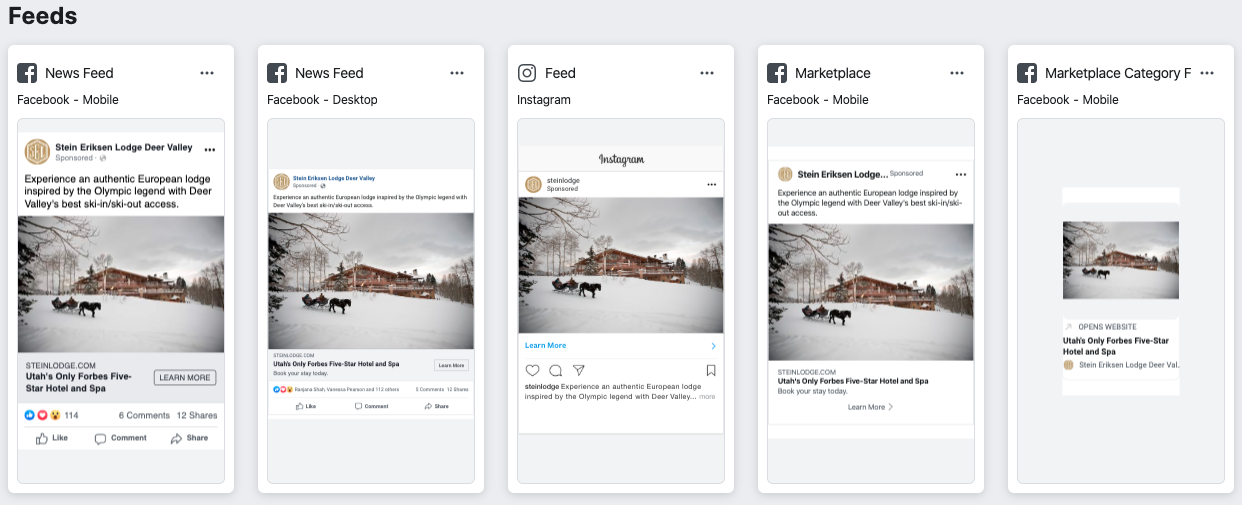Why A Mobile-First Approach Matters For Your Hotel’s Ads
We’re living in a mobile world—it’s 2020 after all! So why don’t all our digital marketing efforts reflect that? How often do you see a Facebook ad on your smartphone with the text cut off because it’s too long? Have you ever scrolled right past a text-heavy display ad where you had to squint your eyes to read? How about a video that didn’t have subtitles or just seemed to drag on and on? These are examples of ads that were not made with a mobile-first approach in mind.
What is a Mobile-First Approach to Ad Messaging?
A mobile-first approach to ad messaging is exactly what it sounds like, ads that take mobile users into account first. If you’re a seasoned digital marketer you know that many years ago there was a huge push to go digital with all marketing efforts (hence, digital marketing). Enter Facebook advertising, display advertising, PPC, email marketing, etc.
A few years ago, another major shift happened: mobile-friendly advertising. With smartphones being more accessible than ever, the landscape changed again. Suddenly marketers started seeing dramatic shifts in numbers where mobile traffic was outweighing or equaling desktop. Now, in 2020, we continue to see mobile traffic growing, but only recently have marketers really started focusing on mobile-friendly and mobile-first messaging.
Smartphones and tablets have smaller screens than desktops, so it’s no shock that ads need to be tailored around that. This means more concise ad copy, shorter videos with subtitles, large text on display ads, and even one-column email templates. While many of these practices may seem like good marketing in general (and they definitely are), some marketers are still slow to adopt them.
At GCommerce, we’ve been making a huge push toward mobile-first messaging and have compiled a few “best practices” and tips for making the shift.
How to Make Your Facebook Ads Mobile Friendly
Facebook ads are arguably the easiest of the bunch when it comes to the mobile shift, especially since marketers have the ability to see ad previews across all placements before hitting publish. Creating mobile-friendly ads for Facebook is especially important because a recent report from Facebook stated that 94% of Facebook ad revenue comes from, you guessed it, mobile.

At GCommerce, our best practice for ad copy is to make everything mobile-friendly. This means that if it’s in any way cut off or too long for the mobile view, we don’t use it at all. Facebook recommends that all primary text copies be 90 characters or less, which equates to about three mobile lines of copy.

This same theory goes for the headline. You want it to be short, but eye-catching. Because Facebook also recently announced that the description section (under the headline) will only be shown if it’s proven useful to any particular user, we think it’s okay to let your headline run onto the second line and use more ad space.
How to Make Your Display Ads Mobile Friendly
Although not as quick to alter as Facebook ads, making your display ads mobile-friendly can be just as easy. Similar to the billboard effect (using seven words or less), you want your display ads to be easy to read on a smaller device. This means packing your ad space with a paragraph of text that looks okay on a desktop but absolutely minuscule on mobile is a big no-no.
Put it this way, if a user has to zoom in to read your display ad, it’s not mobile-first.
How to Make Your Video Ads Mobile Friendly
Compared to other mediums, video ads are relatively “new” on the marketing scene, but we are already learning new ways to optimize them for mobile users. Long videos with sound definitely have their place in the marketing landscape, but in a mobile world, they need to act differently. Videos made for mobile marketing must be shorter and always include subtitles.
A report from Verizon Media stated that 83% of consumers surveyed watch videos with the sound off on mobile and that users are 80% more likely to finish a video when captions are available. If your videos use sound, don’t worry, the report also stated that when captions are available, 37% of viewers were more encouraged to turn the sound on because the video appeared more interesting.
Using a mobile-first approach in digital advertising will help improve performance across the board, whether your goal is to increase bookings or inspire engagement with your users. We’ve already begun to see the effects here at GCommerce and are confident that tailoring your ads to be mobile friendly is the next step in launching your ad efforts into the new decade.
Please reach out to GCommerce with any questions regarding how to ensure your hotel has a mobile-friendly approach to digital marketing.


